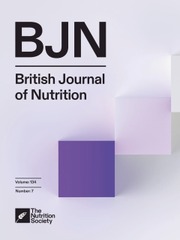No CrossRef data available.
Article contents
Development of a metabolic syndrome prediction model using smartphone-derived digital anthropometry
Published online by Cambridge University Press: 21 November 2025
Abstract
Integrating metabolic syndrome (MetS) screening procedures into routine care remains challenging. Traditional anthropometric and body composition assessments, while useful, have drawbacks that limit their application. However, automated anthropometrics produced from smartphone scanning applications may offer a solution. This study aimed to determine whether smartphone-derived anthropometrics could effectively predict both MetS and its severity. A total of 281 participants underwent a MetS screening assessment to determine fasting blood pressure, lipids, glucose, and waist circumference, and completed a smartphone scanning assessment (MeThreeSixty®) to collect digital anthropometrics. Actual MetS classification and MetS severity (MetSindex), a continuous estimate of MetS progression, were determined using MetS screening data. Then, LASSO regression was used to develop a new MetSindex prediction equation in a subset of participants (n=226), which was subsequently tested in the remaining participants (n=55), and MetS classification was predicted from the retained variables using logistic regression. The following equation was produced:
Smartphone-predicted MetSindex: -0.8880+ 0.1493(medication use=1; 0=no medication use) + 0.0089(weight) + 0.0079(bust circumf.) + 0.0140 (thigh circumf.) – 0.6247(appendage-to-trunk circumf. index),
where medication use includes medications for hypertension, dyslipidemia, or hyperglycemia. The newly-developed MetSindex prediction model demonstrated equivalence with actual MetSindex and revealed acceptable agreement (R2: 0.72; RMSE: 0.42; SEE: 0.22) when evaluated in the testing sample (n=55), although proportional bias was observed (p<0.001). Smartphone-predicted MetS classification demonstrated acceptable diagnostic performance with an accuracy of 92.7% and an AUC of 0.89. Smartphone scanning applications can accurately assess MetS prevalence and severity, presenting new possibilities for health screening beyond clinical environments.
Information
- Type
- Research Article
- Information
- Copyright
- © The Author(s), 2025. Published by Cambridge University Press on behalf of The Nutrition Society

